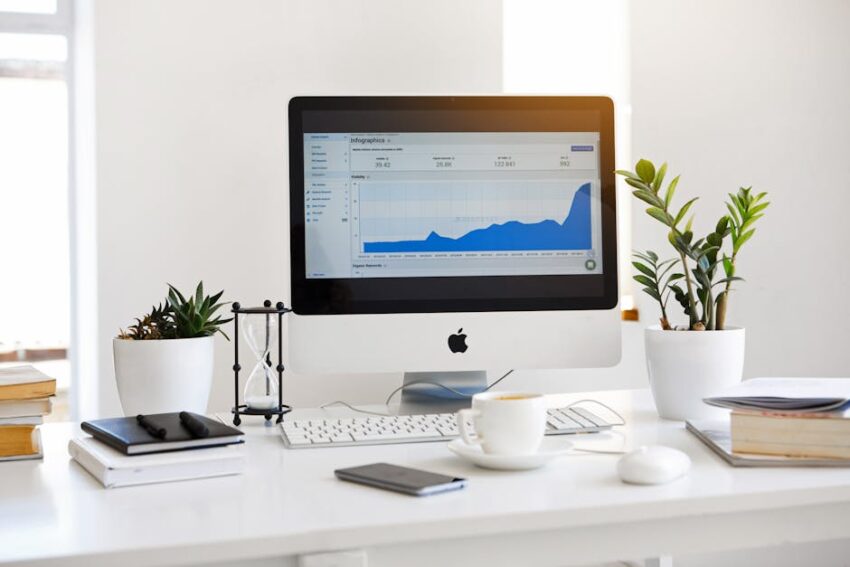Work From Home: Setting Up Your Perfect Home Office
With the rise of remote work, setting up a home office has become crucial for maintaining productivity and balance. Whether you’re a seasoned telecommuter or new to working from home, creating an ideal workspace is essential. In this guide, we’ll explore how to design a home office that enhances efficiency while keeping comfort and style in mind.
Why a Dedicated Home Office Space Matters
According to a 2021 survey by Buffer, 97% of employees would like to work remotely, at least part of the time, for the rest of their careers. Having a dedicated workspace at home is not just about having a place to work. It’s about creating an environment that supports productivity and mental well-being.
Improved Focus and Productivity
A designated home office helps to create a mental boundary between work and home life. Research has shown that separating work from personal life helps in enhancing focus and productivity. Without the usual office distractions, many remote workers report being able to concentrate better in a well-organized home office.
Promoting Work-Life Balance
One of the challenges of working from home is maintaining a healthy work-life balance. A dedicated workspace can help you physically leave work behind at the end of the day, which is critical for mental health and personal well-being.
Essential Elements of Your Home Office
Creating a functional and inspiring home office involves careful planning and investment in the right tools. Here are the essential elements you should consider when setting up your home office.
Choosing the Right Location
The location of your home office can greatly impact your productivity. Consider a space that is quiet, well-lit, and away from high-traffic areas. If possible, choose a room with natural light and a view, as studies have shown that natural light can improve mood and energy levels.
Ergonomic Furniture
Investing in ergonomic furniture is crucial in preventing physical strain and discomfort. A comfortable, adjustable chair and a desk at the right height can make a significant difference in your workday. According to the Occupational Safety and Health Administration, proper ergonomics can reduce the risk of musculoskeletal disorders.
Technology and Connectivity
Ensure you have a reliable internet connection and the necessary technology to perform your job efficiently. This might include a high-speed router, a quality webcam, noise-canceling headphones, and a printer. Upgrading your tech setup can significantly boost your work-from-home experience.
Personalization and Inspiration
Your home office should be a reflection of your style and interests. Adding personal touches, such as artwork, plants, or a motivational quote, can make your workspace more enjoyable and inspire creativity.
Tips for Maximizing Productivity
Once your home office is set up, implementing strategies to maximize productivity is key. Here are some tips to help you stay on track.
Establish a Routine
Creating a consistent daily schedule can help you maintain a work-life balance. Start and end your workday at the same time, and include regular breaks to avoid burnout. A structured routine can help signal your brain when it’s time to work and when it’s time to relax.
Use Productivity Tools
There are numerous productivity tools available that can help streamline your work processes. From project management software like Trello and Asana to time-tracking apps such as Toggl, these tools can help you stay organized and efficient.
Minimize Distractions
Identify common distractions and find ways to minimize them. This might include setting boundaries with family members, using noise-canceling headphones, or employing website blockers to stay focused on work tasks.
Maintaining a Healthy Work Environment
Physical and mental well-being are just as important as productivity when working from home. Here are some ways to ensure your home office supports a healthy work environment.
Incorporate Movement
Sitting for extended periods can have negative health effects. Incorporate movement into your day by using a standing desk, taking regular breaks to stretch, or even doing a quick workout during lunch. According to the Mayo Clinic, taking breaks to move can reduce stress and improve concentration.
Stay Connected
Remote work can sometimes feel isolating. Make a conscious effort to stay connected with colleagues through video calls, instant messaging, or virtual team-building activities. Maintaining social connections is vital for mental health and can make work more enjoyable.
Mind Your Mental Health
Ensure you’re taking care of your mental health by setting boundaries, practicing mindfulness, and seeking support if needed. A 2020 study by the American Psychological Association found that remote workers often report higher levels of stress, emphasizing the importance of mental health care.
Conclusion
Setting up the perfect home office is a personalized process that requires thoughtful consideration of space, furniture, technology, and personal habits. By creating a dedicated workspace that meets your needs, you can enhance your productivity, maintain a healthy work-life balance, and enjoy the benefits of working from home. Remember, a well-designed home office is an investment in your professional and personal well-being.


